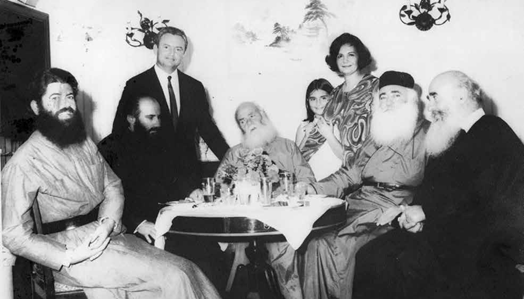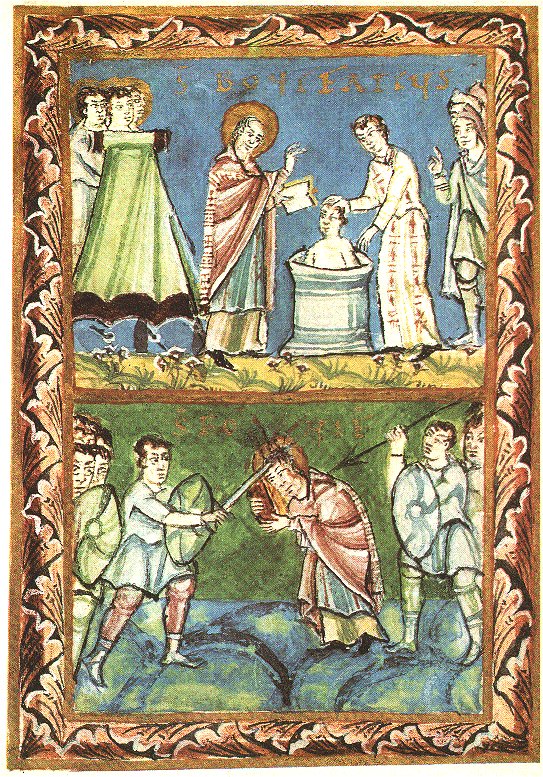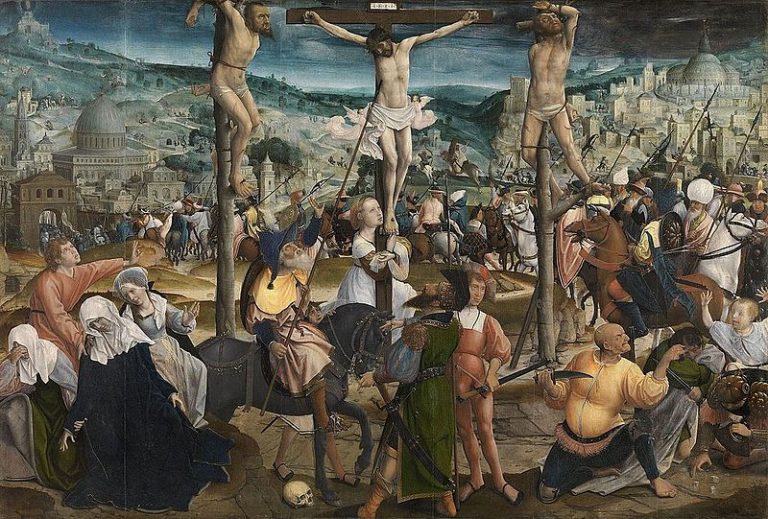Saints Cyril and Methodius: The Illuminators of the Slavs
Saints Cyril (827-869 AD) and Methodios (815-885 AD) came from Thessaloniki and their father was an officer in the Byzantine army. Constantine was educated in the kingdom at the feet of Leo the Wise and Photius the Great. He was educated and excelled in almost all the sciences of his time, the first and best being philosophy, hence the nickname “philosopher” given to him by his biographer. He spoke several foreign languages, served as librarian of the patriarchal library and succeeded St. Photios in the professorship of philosophy at the school of Magnaura. Methodius, in turn, made a career in the military field, even attaining the rank of commander. But his love for Christ overcame in his heart the glamour of worldly challenges and he became a monk in a monastery near Mount Olympus in Bithynia. The angelic way of life of Methodius also fascinated Constantine, who distributed his possessions to the penitents and, after a short time, he too marched to Mount Olympus with his brother. As the Archbishop of Albania emphasizes in his book “To the End of the Earth”, “this wonderful harmonization of scientific training, experience of the world, desire for the ‘hidden life in Christ’ was the secret flame which gave so much strength and fruitfulness to the work of the two leading Byzantine missionaries. And it should be – at least as an ideal – the starting point and basis for all those who are thinking of ministering in the work of the Orthodox mission.”
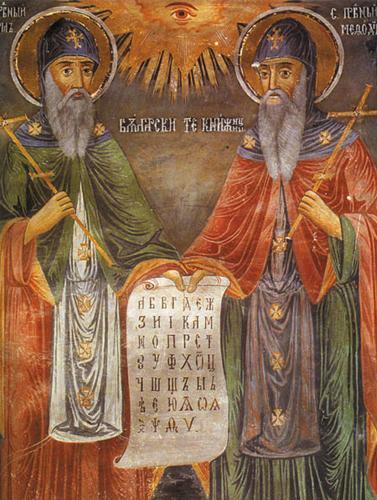
Based on historical sources, the period in which these prominent holy figures were active was particularly troubled by both ecclesiastical and political problems. The first unpleasant event was the iconoclasm, which, although it was coming to an end, had nevertheless rekindled the ecclesiastical conflict. Furthermore, theological friction between the patriarchates of Rome and Constantinople was caused by the removal of Ignatius from the patriarchal throne of the Basilica and his replacement by Photius the Great. The already troubled waters of the time were turned into a storm by the victorious battles and the dangerous external pressures of the Muslim Arabs. But no, these titans of the evangelical ideal did not devise reasons to shun the missionary effort. Although the issues of both church and state seemed truly ominous, they did not faint. Commenting on both their lives and their conduct, Anastasius Albanian in the same work concludes : “This sense of a general historical and ecclesiastical debt to the developing peoples, even in a time of serious internal problems, is most remarkable. Domestic issues have never been lacking, nor will they be lacking, in the Church. But for no reason should they absorb us to such an extent that we renounce our “faith” in the catholicity and apostolicity of the Church and “myopic” before our general historical responsibility for the offer of Orthodoxy in regions where profound ethnological ferment is taking place, as for example today in Africa. The “inside” and the “outside” affect each other and must be treated as a single duty and problem. Especially in our times, when peoples are being driven into an unprecedented interdependence.
In 862 AD, when the Moravian ruler Ratislav asked Byzantium for missionaries who knew the Slavic language, Saints Cyril and Methodius saw this as a divine invitation and accepted it. Before they even left Byzantium and began their missionary activity, a period of systematic preparation took place. First of all, they invented the Slavonic alphabet, and then they looked for collaborators, each of whom would offer the best possible services to the missionary work. Thus, they were followed by priests, monks and craftsmen for the reconstruction of temples.
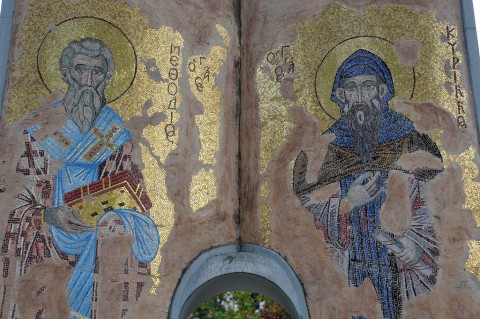
In 863 AD, after a year of preparation, they arrived in Moravia where they were warmly welcomed by the ruler Ratislav. The saints were engaged in the translation of ecclesiastical texts, while at the same time seeking to educate and raise local priests. Their intensive activity challenged the Roman Church (and more specifically the Latin bishops who envied this work), which launched a persecution against the two missionaries. In February 869 A.D. Cyril was laid to rest and Methodius continued the missionary work between the stakes. The Latin bishops made it their goal to eliminate him. They even went so far as to abuse and imprison him. He was later restored to his office, without of course being able to minister in the Slavic language. In 885 AD, St. Methodius breathed his last in Moravia. It is surprising and painful that, after the death of the two missionaries, the ruler of Moravia as well as the successors to their ecclesiastical offices set out to destroy what the Thessalonian saints had created with toil, sweat, tears and blood. But although their work apparently failed, history has subsequently shown that the Lord blessed it, giving His Church spiritual fruit through the disciples of Cyril and Methodius, who preached the gospel with fervent zeal wherever they found themselves.
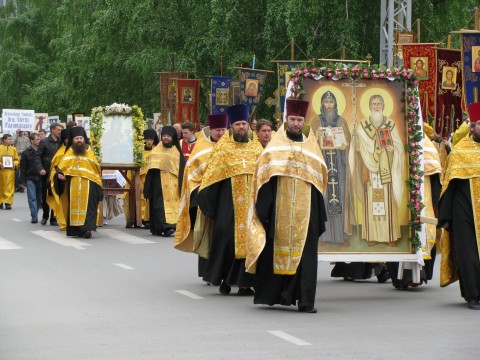
The memory of Saints Cyril and Methodius on 11 May of each year is a joy and pride in Christ for the Brotherhood of the Orthodox Foreign Mission of Thessaloniki, which respects and honours them as its patrons.
Apolyticon. Sound pl. a’. Showing the apostles’ zeal, on the lands of the Slavs the light of the Gospel, you have shone forth in glorious divine preaching, the shoots of Thessalonica, and stars of light, Methodius and Cyril, self-brotherly diviners, the modesty of the Churches.

